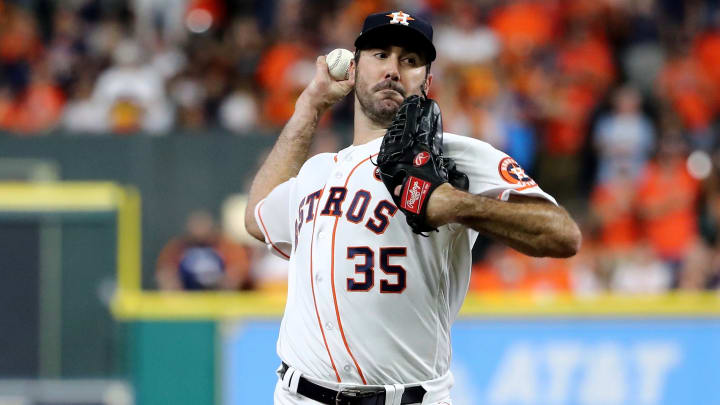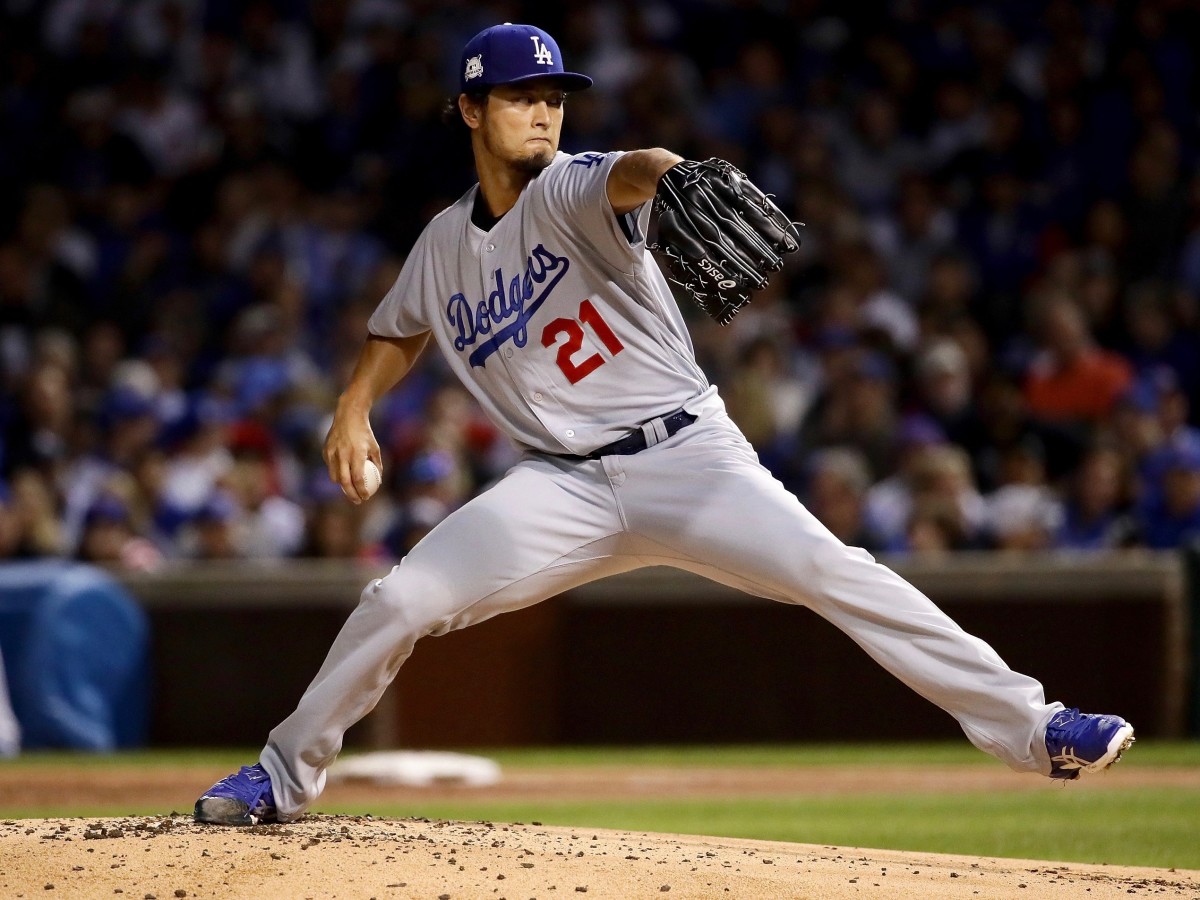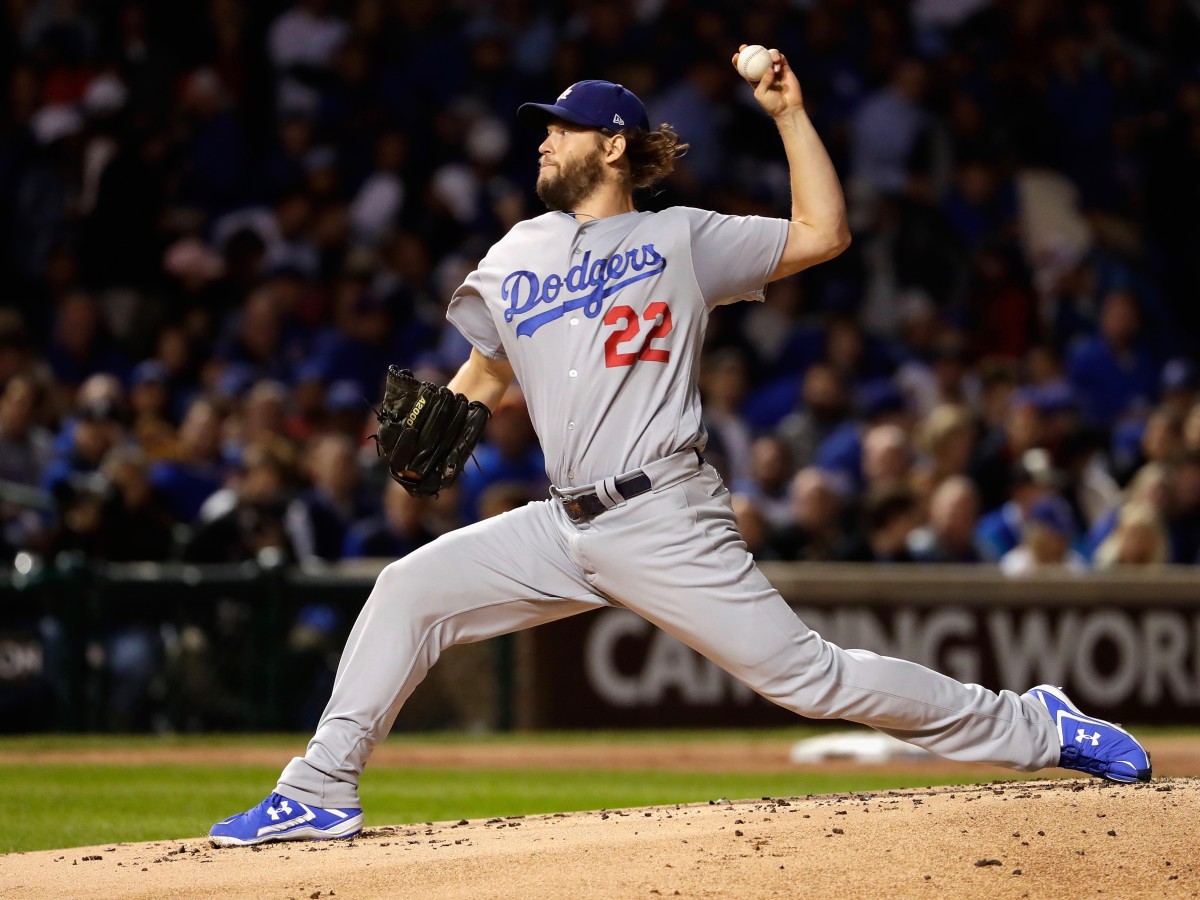The Astros and Dodgers Exemplify Contemporary Baseball. Now, They Meet in the World Series.

In 1894, long before the amphitheater that is Dodger Stadium was carved into the hills below, surveyors climbed almost 6,000 feet to a peak in the San Gabriel Mountains they had identified as the highest in the area. Alas, when they crested the summit they found a point a half mile to the east that reached 167 feet higher. Thus did Mount Disappointment get its name.
Every year 29 baseball teams wind up, like erring 19th-century surveyors, climbing their own Mount Disappointment. This was the Dodgers’ destination for the past 28 years, their longest unrequited run since relocating from Brooklyn in 1958. Even longer in wait are the Astros, who have never won. Their 55-year drought is exceeded only by those of the Indians (69 years) and the Rangers (57).
With this year’s opponents (83 combined years in vain), like those last fall (a record 176 years) and in 2015 (59 years), the baseball gods are showing a soft spot for teams that haven’t won in a generation or three. But the real revelation lies in what Los Angeles and Houston, like the Cubs and the Indians in 2016, did to summit the Series.
While playoff teams are built before the season, pennants now are won in the summer through bold acquisitions. Both the Dodgers and the Astros were cruising to division titles when, like the Cubs (Aroldis Chapman) and the Indians (Andrew Miller) of a year ago, they decided very good wasn’t good enough. L.A. and Houston swung megadeals to make this Series happen. The Dodgers, scalding hot, were wrapping a 20–3 July when they acquired starter Yu Darvish from Texas. The Astros enjoyed an 11 1⁄2-game lead at the end of August when they traded for Tigers ace Justin Verlander.
World Series Predictions: Will the Astros or Dodgers Be the 2017 Champions?
“With the two wild cards, it’s easier to get to the postseason,” Houston general manager Jeff Luhnow said last Saturday night after his team knocked the Yankees out by allowing one run total in Games 6 and 7 of the ALCS. “But it also means it’s easier to lose in the postseason once you get there. You need a dominant bullpen and two dominant starters. If you don’t have that, you better go get it.”
Just as Darvish complemented three-time Cy Young Award winner Clayton Kershaw, Verlander gave Houston a starter to ride shotgun with 2015 Cy Young Award winner Dallas Keuchel, who also played closer when he called an uncertain Verlander 10 minutes before the Astros would have run out of time to complete the deal.
“No,” Luhnow corrected himself, after watching Charlie Morton and Lance McCullers combine on a three-hit ALCS Game 7 shutout that was a festival of curveballs. “We have four dominant starters now. We’re peaking at the right time.”
Entering the Series, Verlander and Darvish had combined to pitch six games this postseason and won them all, with a 1.25 ERA. “Thirty-five is a game-changer,” says Houston third baseman Alex Bregman, referring to Verlander by his uniform number. “When he walked in here, we immediately were a different team. It’s his presence. He’s Justin Verlander! When we got him it was like, O.K., now we know we can win this thing. Man, I’m getting chills just talking about it.”
Says manager A.J. Hinch, “He brought us to the next level. The expectations in this clubhouse went up. As a player you can’t fake it. As a manager you can’t demand it. He made it happen.”
****
Half the teams in baseball have reached the World Series in the past 12 years. But there is a growing chasm between the haves and have-nots. The dramatic rebuilds practiced by teams like the Cubs and the Astros—tear it all the way down to build it back up—has become the preferred practice to throwing cash at mediocre rosters on the lottery-ticket chance of winning 87 games and a wild-card spot.
As more teams go off the competitive grid, those still in pursuit of a title have an even better chance to pile up wins. This boom-or-bust bifurcation helps explain why for the first time since 1970, the World Series has teams with triple-digit victories in L.A. (104) and Houston (101).
Dodgers-Astros Position by Position Breakdown: Who Holds the Edge in the World Series?
The arc of the Dodgers’ moves under president of baseball operations Andrew Friedman reflects the growing importance of upgrading for the playoffs. He went from adding Alex Wood (a good starter) in 2015 to Rich Hill (a better one) in ’16 to Darvish (the best). All of them now provide cover for Kershaw, who after 10 seasons made it to his first Fall Classic because he no longer has to deliver wins on short rest—or, with his straggly beard and weary frown, have the look of a guy bearing the weight of a whole team.
After L.A. blitzed an outmanned Cubs team in five games, manager Dave Roberts said, “The first thing that comes to mind is Clayton and how long he’s been a Dodger and how much he’s wanted this opportunity.”
The Dodgers’ acquisition of Darvish was completed in the last minute before the July 31 trade deadline, with L.A. sending three prospects to Texas. (The Dodgers pursued Darvish rather than Verlander because they did not want to take on his future salary; Darvish is a free agent after this season.) The Dodgers immediately indoctrinated Darvish into their analytics-based pitching culture, giving him more rest between starts to save bullets for October, reducing his fastball use to less than 50.0% and, because of their formidable bullpen, cutting his average pitches per start from 100.5 to 90.7. Darvish responded well. In 11 starts, seven of them L.A. wins, he went 6–3 with a 3.09 ERA while his strikeout rate shot up from 9.7 per nine innings to 11.1.

As L.A. snapped up Darvish, Luhnow tried but couldn’t get Verlander from the Tigers in July. “They wanted the kitchen sink,” Houston owner Jim Crane says. The Astros, mopey after a big addition didn’t come, fell into a 10–17 swoon. On Aug. 26, Hurricane Harvey, the wettest recorded atmospheric event in mainland U.S. history, swamped Houston and the surrounding area. The combination of the Astros’ lackluster play and the city’s suffering spurred Luhnow and Crane to get something done before Sept. 1, the deadline for traded players to be eligible for postseason play.
“The problem was that we didn’t know if Verlander was going to waive his no-trade clause,” Crane says. At 10 minutes before the midnight deadline, Verlander’s phone rang. It was Keuchel, saying, “If you come here I guarantee you won’t regret it.”
Verlander knew Houston was rich in young talent and was just opening a window to compete for years. With two seconds to go he completed the paperwork to waive his no-trade provision, and three prospects went to Detroit.
Verlander would soon discover an added benefit to the trade: The Astros were cutting-edge in their use of analytical tools and processes. A 2014 conversation with Tigers manager Brad Ausmus had opened his eyes to the world of information available. He began seeking out pitch data, keeping his own handwritten statistics and notes, and visiting a pitching guru of modern data-based mechanics to learn about spin rates, release points and arm health.
In Houston, Verlander found another tool to improve and modernize his game: a super-high-speed camera that films bullpen sessions. It revealed that after heaving so many high fastballs, in which he pulls his elbow down to launch the pitch higher, his elbow had also dropped slightly when he threw his slider, robbing him of needed tilt.
Forget the Underdog Label—the Astros Got to the World Series by Tanking
He fixed the flaw, and the batting average against his slider promptly dropped from .238 with the Tigers to .157 with the Astros. Against New York in Game 2, Verlander threw a career-high 39 sliders among his 124 deliveries. A 2–1 winner, Verlander became the first pitcher in 10,826 consecutive regular-season and postseason starts to throw a complete game with so many pitches. (The last pitcher to do it, in September 2015? Kershaw.)
Verlander’s next start came under more dire circumstances. Houston had lost the middle three games at Yankee Stadium in the manner of the nervous out-of-town tourist with black socks pulled to the knee, craning at skyscrapers. One game from another Mount Disappointment, Verlander took the ball at Minute Maid Park. “This,” he said, “is why I came here.”
Anxiety continued to ooze from the Astros’ at bats in Game 6. They chased 10 pitches out of the zone in four scoreless innings against righty Luis Severino. Finally, in the fifth, Bregman recalibrated the majors’ highest-scoring offense with a leadoff walk. Beginning with that patient at bat, Houston did not swing out of the strike zone at any of Severino’s final 26 pitches. The walk triggered not only three runs, but also a landslide of momentum. The Astros outscored New York 11–1 in the series’ final 14 innings.
Verlander completed seven shutout innings for a franchise that had been 2–10 when facing elimination. No pitcher has ever been better with a team’s season on the line. Verlander has thrown 24 consecutive scoreless innings in elimination games, has the lowest career ERA in such pressure cookers (1.21) and is tied with Curt Schilling for the most wins in those spots (four).
Enemy Lines: A Rival Scout Breaks Down the Astros Ahead of the World Series
Verlander is 34, yet he is pitching with a young man’s tools. He was one of only seven qualified pitchers that old during the regular season, the rest of whom all threw with below-average velocity (93 mph). Verlander rushed his four-seamer up to the plate at 95.7 mph, the angriest it has been since he won the Cy Young and MVP in 2011. In the ALCS he found even more menace, boosting his average fastball to 96.1 mph. His spin rate on the pitch jumped from 2,541 rpm during the regular season to 2,635 against the Yankees.
“There are still going to be times when I struggle with my mechanics,” says Verlander. “The difference now is here I have the tools and resources with this team to figure out what’s wrong and fix it much quicker.”
****
This World Seriesis not just verification of the second phase of team-building—building for October—but also how metrics have affected baseball, especially pitching. Since the season ended the three oldest managers—the Mets’ Terry Collins, 68; the Nationals’ Dusty Baker, also 68; and the Phillies’ Pete Mackanin, 66—have been let go. Roberts, 45, and Hinch, 43, are in the vanguard of young skippers who implement the data-based strategies of the front office rather than perpetuate the oral traditions about “the Book” and playing the game “the right way.”
Two years ago no team threw fewer than 50% fastballs. This year five did, including the Astros. The rise of the breaking ball is a key to the pitching revolution, a trend encouraged by the recent collection of data on spin rate, spin axis and how hitters handle specific pitches. This World Series is Spin City. Houston led the AL in throwing breaking balls (34.0%), while L.A. was third in the NL (30.0%). If hitters bat .272 off fastballs and .217 off breaking balls, as they did this year, why wouldn’t you throw more breaking pitches?

The World Series also features six of the top 18 breaking-ball pitchers in the game, as ranked by percentage usage among those who threw at least 2,000 pitches: Kershaw (first, at 50.6%), Hill and Kenta Maeda for the Dodgers, and McCullers, Brad Peacock and Verlander for the Astros, all of whom spin it more than 37% of the time. Among pitchers who threw 500 curveballs, there are also four of the top five in spin rate: Morton, McCullers, Verlander and Hill.
Houston closed out the series by accentuating what it does best: feeding the Yankees 46.0% breaking balls in Games 6 and 7, and holding them to a .111 average on those pitches.
Last Saturday’s display belonged in the Guggenheim Museum Bilbao of contemporary pitching, an unmistakable triumph of technological and artistic modernity. No team had ever thrown a Game 7 shutout with so few hits (three) and so many strikeouts (11). The Astros did so using only Morton, a 33-year-old journeyman they signed in part because of the high spin rate on his curveball (which they then encouraged him to use more often), and -McCullers, a 24-year-old who can throw 98 mph but would rather spin it. Morton and McCullers combined for just 108 pitches—65 of which were curveballs. The Yankees went 1 for 17 against their hooks. McCullers ended the game by throwing 23 consecutive curves.
There’s a bulletin board on a wall next to the wide entrance to Houston’s clubhouse. It is where Hinch posts his lineup each day, in addition to any other important club news. The story of Game 7 remained up as the team celebrated its outcome. Next to the lineup card were two side-by-side pictures of Yankees starter CC Sabathia from Game 3 in New York, one throwing his fastball and one throwing his slider. Sabathia had bedeviled them in Game 3 with six shutout innings built on 38 sliders. But the Astros decoded something in the pitch in Game 7. He tried 27 sliders, but this time he couldn’t get them to chase it (they swung at only three out the zone, one of which Evan Gattis blasted for a homer) or miss it (not once).
Enemy Lines: A Rival Scout Breaks Down the Dodgers Ahead of the World Series
Next to the still pictures of Sabathia was a printout that had been posted before the game with the header World Series Itinerary, complete with reporting times and flight information for the trip to Los Angeles. This is the trip for which the Astros planned for six years, dating to when Crane bought a 106-loss team and people in restaurants would stop not to congratulate him but to console him. It was the trip for which Luhnow planned when he handed Crane a 22-page blueprint for rebuilding. It was the trip they had in mind when they turned the curveball from a side dish into their entrée. More than anything, it was the trip they envisioned when they got Verlander.
The World Series returned to Dodger Stadium for the first time since 1988, a very different game back in a timeless and picturesque setting. The sky color-washed in pastels as dusk creeps over the San Gabriels, the tableau is a plein air landscape come to life. About 20 miles beyond centerfield stands Mount Disappointment, a terminus the Dodgers and the Astros know too well. This time, though, one of them will have made the midseason move to take them higher. One of them will go the last 167 feet.
